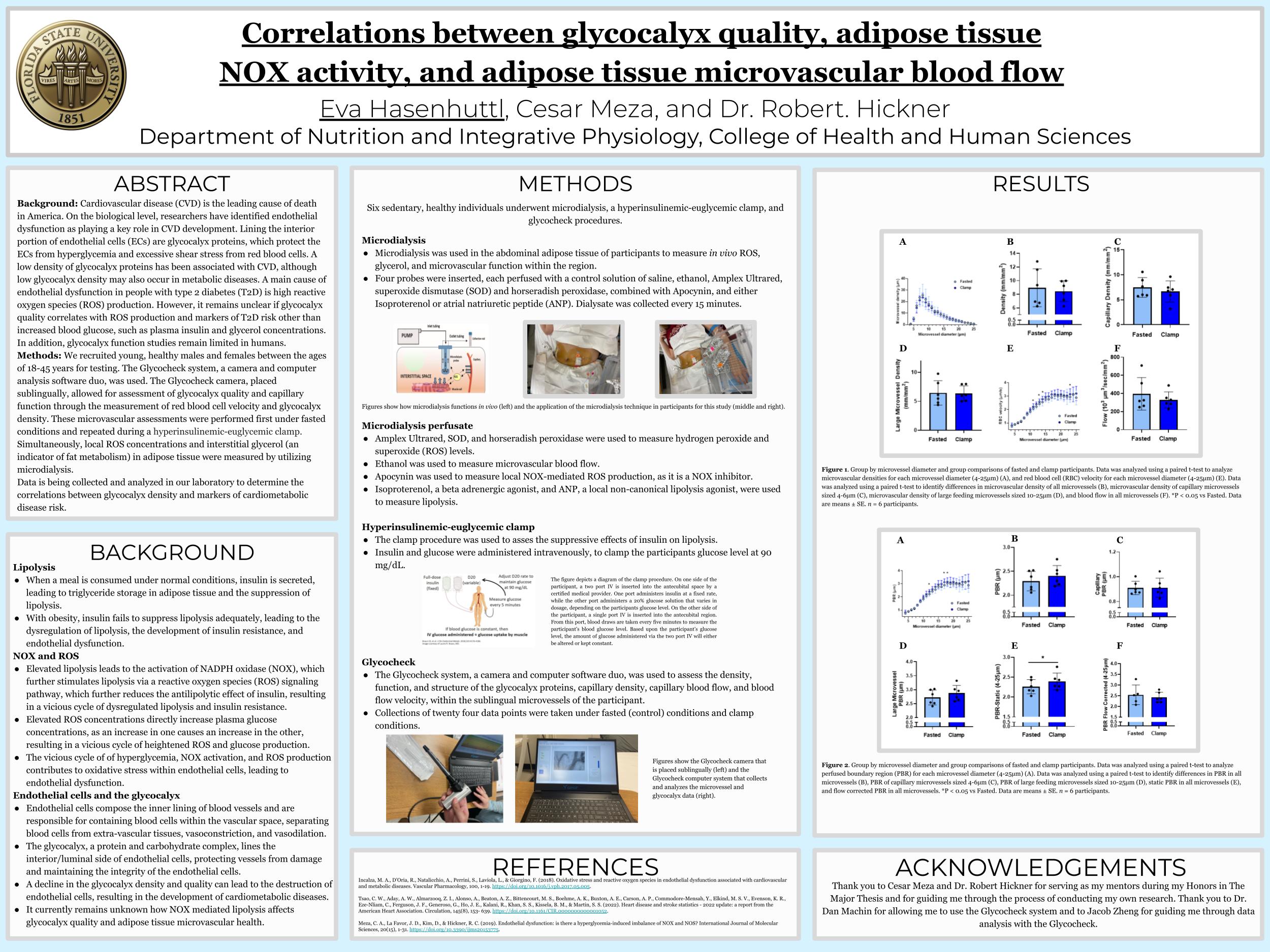Research Symposium
23rd annual Undergraduate Research Symposium, April 6, 2023
Eva Hasenhuttl Poster Session 4: 4:00 pm - 5:00 pm/ Poster #170
BIO
Hello! My name is Eva Hasenhuttl and I am a senior here in the Honors College at Florida State University. I am majoring in Interdisciplinary Medical Sciences, Clinical Professions, as well as completing a certificate in Emergency Management and Homeland Security. Outside of academics, I have been a research assistant for the past three years in a human science research lab, a medical assistant at TMH's Southern Medical Group for the past year, and an internal member of Dance Marathon at FSU for the past four years. After I graduate this coming August, I will be returning back home to Palm Beach, Florida to spend time with family, apply to Medical School, and participate in international aid abroad.
Correlations between glycocalyx quality, adipose tissue NOX activity, and adipose tissue microvascular blood flow
Authors: Eva Hasenhuttl, Dr. Robert HicknerStudent Major: Interdisciplinary Medical Sciences, Clinical Professions
Mentor: Dr. Robert Hickner
Mentor's Department: Nutrition and Integrative Physiology Mentor's College: Health and Human Sciences Co-Presenters:
Abstract
Background: Cardiovascular disease (CVD) is the leading cause of death in America. On the biological level, researchers have identified endothelial dysfunction as playing a key role in CVD development. Lining the interior portion of endothelial cells (ECs) are glycocalyx proteins, which protect the ECs from hyperglycemia and excessive shear stress from red blood cells. A low density of glycocalyx proteins has been associated with CVD, although low glycocalyx density may also occur in metabolic diseases. A main cause of endothelial dysfunction in people with type 2 diabetes (T2D) is high reactive oxygen species (ROS) production. However, it remains unclear if glycocalyx quality correlates with ROS production and markers of T2D risk other than increased blood glucose, such as plasma insulin and glycerol concentrations. In addition, glycocalyx function studies remain limited in humans.
Methods: We recruited young, healthy males and females between the ages of 18-45 years for testing. The Glycocheck system, a camera and computer analysis software duo, was used. The Glycocheck camera, placed sublingually, allowed for assessment of glycocalyx quality and capillary function through the measurement of red blood cell velocity and glycocalyx density. These microvascular assessments were performed first under fasted conditions and repeated during a hyperinsulinemic-euglycemic clamp. Simultaneously, local ROS concentrations and interstitial glycerol (an indicator of fat metabolism) in adipose tissue were measured by utilizing microdialysis.
Data is being collected and analyzed in our laboratory to determine the correlations between glycocalyx density and markers of cardiometabolic disease risk.
Keywords: lipolysis, NOX, ROS, glycocalyx, cardiometabolic disease


